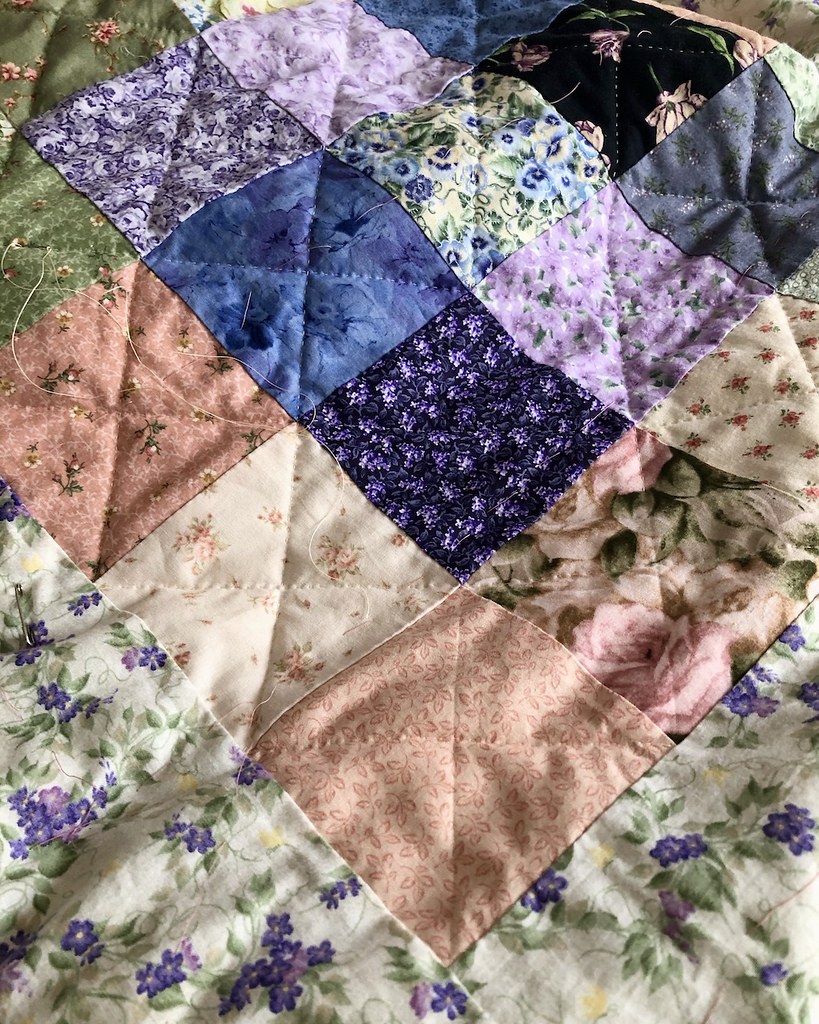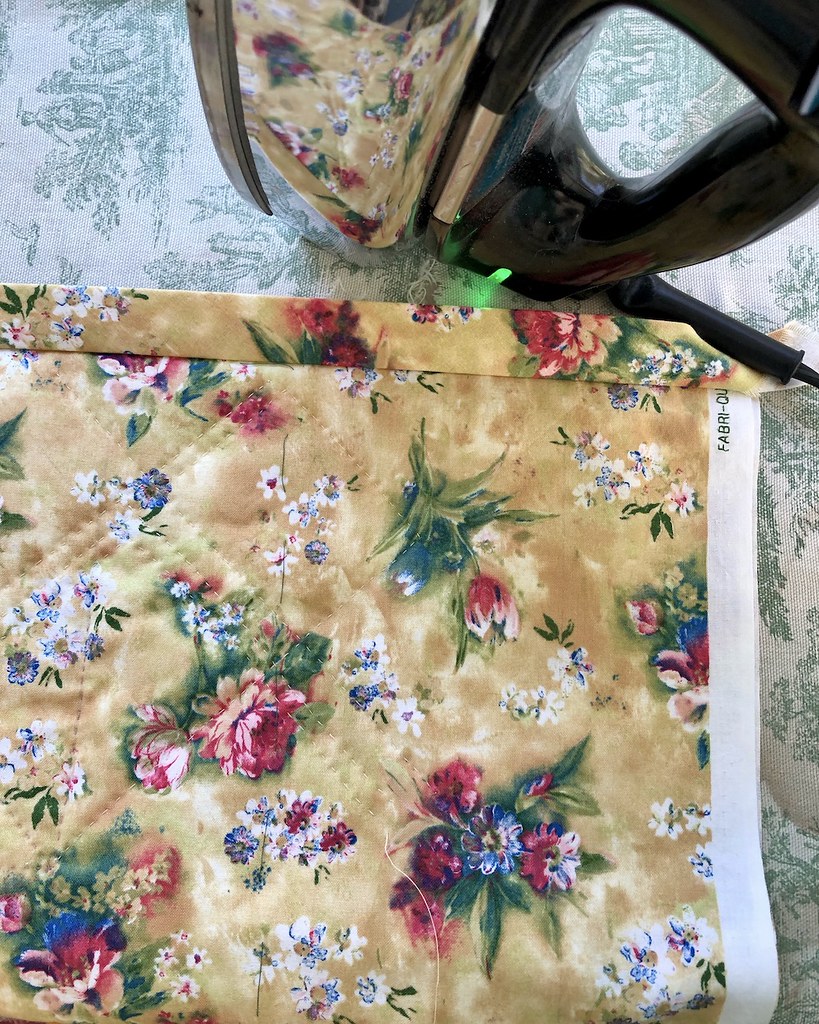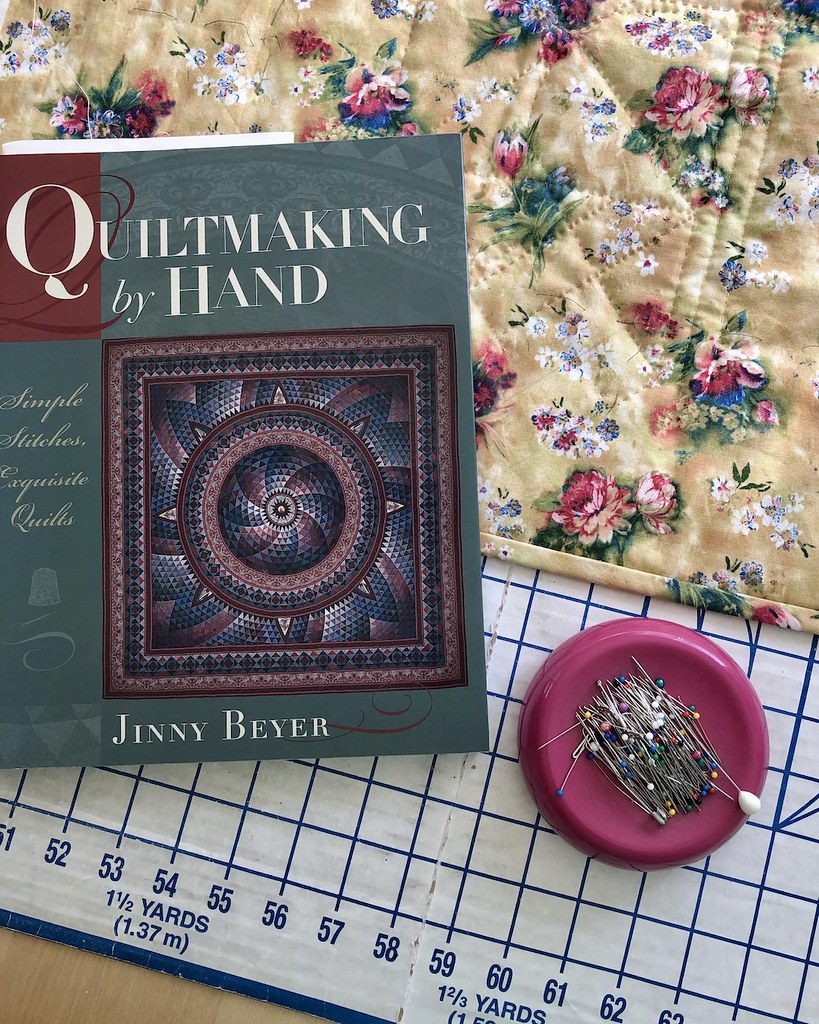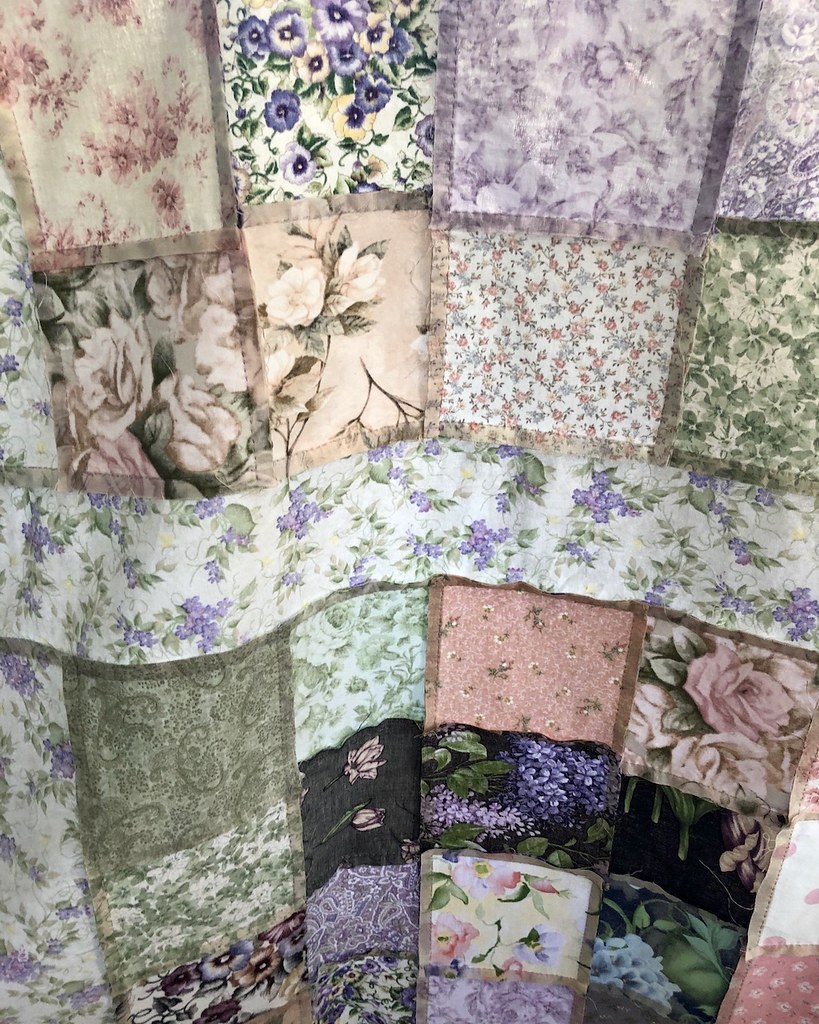Today, we have the case of the never-ending scrappy quilt. I suppose most larger quilt projects take a fair amount of time, but this one has been going on for YEARS! I started hand piecing the quilt top somewhere around 2013, which may account for why it has taken so very long - there are no sewing machines involved in the making of this quilt. That, and I often get distracted by all of the other creative projects that run amuck in my home.
While I love this quilt because it has so many leftover scraps of old projects, it is not my absolute favorite quilt top. I think that my hexi quilt probably holds that title at the moment. But I didn't think that it was a good idea to learn how to hand quilt using my favorite quilt top. Because while I feel pretty darn confident with my hand sewing, this is a horse of a different color!
It has actually been rather frustrating, in many ways. The process feels like re-learning how to hand sew, because it has very little to do with what I consider to be hand sewing.
But I am sticking with it!
I am not sure exactly what I was expecting. It wasn't a logical mind that thought that I would have perfectly even tiny stitches from the get-go with a technique that is entirely new to me. But somehow my stitches look enormous and nothing like the vintage quilts I have seen.
But I came up with a basic idea for the quilt design and jumped in.
Some of the blocks have an outline stitch around each square, while other have a diagonal line running through them.
Of course, I never thought about the fact that crossing through the seam allowance at those corner joins might not be such a great idea. So those stitches are even more uneven than the others due to the added thickness. I have also been struggling with thimbles, and what to do with the finger that feels for the needle underneath the quilt. I tried using just my finger, but that didn't last long. Next up, I tried using a variety of thimbles (even though they are not suited to the task). I found a plastic one that did an okay job, but as you can see from the photo below, it didn't survive the journey. But it's a process, and I am slowly learning what works and, perhaps more importantly, what doesn't.
My practice scrap came in handy when I reached the binding stage.
It often feels tedious to take the extra time, but I figured I might as well make sure that I liked the width and double layer method of binding before attempting a queen/almost king sized quilt. I got lucky the first time around with this one.
Methodically stitching down a binding by hand is my idea of heaven, so this portion of the quilt felt like coming home after struggling through the quilting.
This will never get old for me. I know it bores some people, but basic hand stitching is so very relaxing to me.
Quiltmaking by Hand by Jinny Beyer was a great resource. This book is so beautiful!
Because of the size of this quilt, I also had a few more hand sewing opportunities while piecing the back layer together. And my goodness, it is challenging to find 9 yards of a quilting cotton that I like. I spent hours at a quilt store and most of my bolt choices did not have enough yardage. I didn't feel like risking an online purchase only to find that the cotton was stiff, seeing as I would be hand quilting through it. This particular print was not my first choice, but I have come to the conclusion that it was meant to be.
I had previously purchased a different backing without taking photos of my quilt along for comparison, and was disappointed to discover that the nine yards of fabric just didn't play well with the quilt top. But since those nine yards turned into a beautiful dress, the folly was rewarded.
The ironing stage was a bit of an adventure, mostly because of the size. Why exactly did I choose such a massive quilt for my first project?!
But eventually, I got there!
Many of these fabrics are from previous projects, so it really is a trip down memory lane to look at the quilt top.
Next, it was time for the quilt sandwich. I struggled with my choice of batting for some time, and finally settled on wool, specifically, Hobbs Heirloom Wool Batting.
I knew that I wanted something that would needle easily. And while there is a multitude of information on quilting out there, the majority relates to machine quilting. Finding information specific to hand quilting is challenging, and most of what is out there is basic overviews, not in depth knowledge.
I decided to splurge on the wool because I heard that it was lovely to hand quilt. And it was, for the most part, although the batting is perhaps slightly more lofty than I anticipated.
A few thousand stitches later, and there are still miles to go!
























Beautiful I bet it's soft
ReplyDeleteHave no worries about your stitch length and the value of your quilt. Some of my most precious quilts were made by a blind woman... the stitches are not wee. But the quilts are beautiful.
ReplyDeleteI like to put several layers of medical tape on my finger when I need both protection from the needle, and a sense of touch, such as for the under the quilt hand. It's flexible and easily removable. A very thin leather thimble would probably work the same way.
ReplyDeleteYour stitches are beautiful and this quilt is a work of art. It reminds me a of a Monet painting. Sleeping under such a warm and cozy cover will be heavenly.
ReplyDeleteThat looks wonderful so far!
ReplyDeleteI like the Clover Natural fit Leather thimble for flexibility and protection. I often use a combination of a metal thimble for pushing and a leather thimble for the under finger.
Your quilting looks fine, particularly for someone who's used to garment sewing! Ask me how I know this! (I make a lot of my own & husbands clothes, when not quilting) :)
ReplyDeleteI'm a hand quilter, too, and I love wool batting and also silk batting, when I can find it. :) Both are wonderful to work with. I actually put together three quilt tops during the 2020 lockdowns, including one that had been sitting in a box since 2005! Two of the quilts are finished, but the 2005 project is a big one, and I need a huge expanse of floor in order to sandwich it for quilting!
For stitching help, check out That Perfect Stitch. They have good thimbles and tutorials for a good handquilting method. Might be of use to you. :)
I will definitely look out for that book.
DeleteAnd someday I will have to try out silk batting because it sounds amazing!
Jaw...
ReplyDelete...on...
...floor.
Your hand quilting looks great to me! Some people use a metal tool called aunt Becky's finger protector on the hand that's under the quilt.
ReplyDeleteI discovered that tool in my search for hand quilting bits and bobs and am currently trying to learn how to use it. Thank you for the suggestion!
Delete